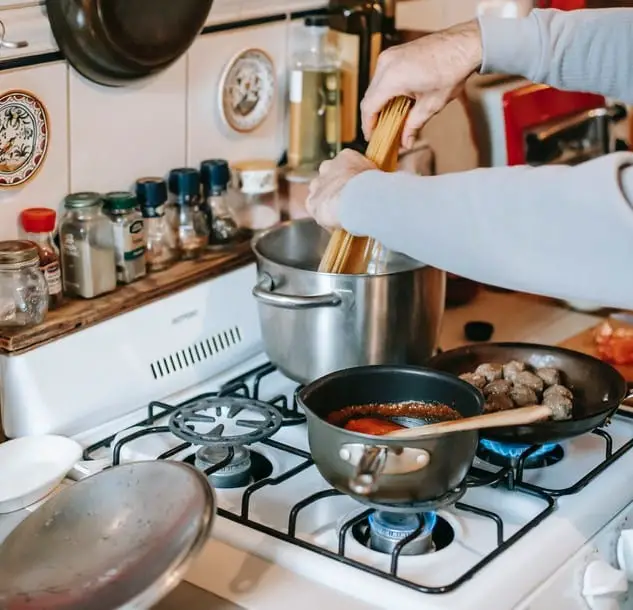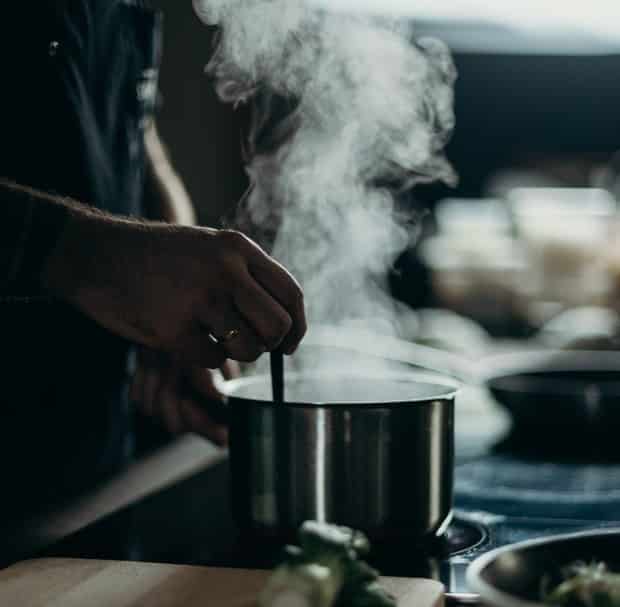Have you ever noticed that food heated in a microwave oven usually tends to lose heat faster than food heated over a conventional stove?
Is it true that food heated in a microwave oven cools faster than conventional heated food or there is something you have been missing?
If this is one thing that has tingled your curiosity, stay with me as I deconstruct this food wonder in this article with a simplified scientific explanation.
In summary, microwave heated food tends to cool faster than conventionally heated food because, in microwave heating, there is uneven heating where the outer layers of food receive heat faster than the inner layers, which consequently, makes them lose the heat faster than foods heated in conventional ovens.
With that said, there are still other factors that contribute to this phenomenon and most of them have almost everything to do with how the food is heated.
You may as well have noticed that food heated in a microwave oven tends to cook faster.
This assumption may be subjective but it may hold some explanation as to why microwave food also cools faster.
So let’s look at the heating first.
Does Microwave heated Food Cook Faster?
Microwave heated food tends to cook faster because the electromagnetic waves generated by the microwave oven reach the water molecules in the food faster than conventional heating.
This is because the main heat transfer method in microwave cooking is radiation which is a faster heat transfer method than conduction.
As explained earlier in my previous article here, conventional oven cooking depends on conduction heat transfer.
This simply means that a surface (pan or cooking container) has to receive heat first then transfer that heat to the food being heated.

You can clearly see how this is going to elongate the cooking time in conventional cooking.
On the other hand, microwave cooking depends on dielectric heating which is a thermodynamic process that heats food directly through radiation.
The container is not directly heated in this process.
The direct injection of radiations into food in a microwave makes it easy for the heated water molecules in the food to get energized and enable the food to cook faster.
The problem is, the outer parts of food get the most of this radiation energy first leaving behind the inner parts.
Now, this has so much to do with how these foods will eventually behave when taken out of their respective heating equipment.
It is mostly the food responding to the uneven heating in the microwave oven.
What Causes Uneven Heating in a Microwave Oven?
Based on the above explanation of why microwave food tends to heat faster, I can point out two major factors that will contribute to uneven heating.
These are:
- Non-uniform heat transfer in the Food
- Heat energy contribution from the heating container
Let me give a brief explanation of how each of these work to make the food cool quicker.
Non-Uniform Heat Transfer in Microwaved Food
The process of thermalization caused by electromagnetic waves in the microwave oven excites water molecules on the outer parts of the food first as they slowly penetrate the food.
Since the outer parts receive more radiation, more heat energy is concentrated on the outer layer and continues to slowly transfer the energy into the food’s core.
This process is usually slow and may even continue after the food is out of the microwave.
The cold parts inside the food thus continue to snatch heat from the outer parts when the food is out of the microwave oven.
So, other than losing heat to the environment, food from the microwave also loses heat into its own inner unheated parts.
This is not the case in conventional stovetop heated foods.
These foods are usually heated by a combination of conduction and convection heat transfer methods which ensures that the food is heated uniformly to the core.
When taken out of the heat, the conventionally heated foods only lose heat to the outside environment.
This means that their rate of cooling will be slower than microwave heated foods which are losing heat on two fronts.
Heat Energy Contribution from Heating Container
Unlike microwave heating where only the food is heated, conventional stovetop cooking heats up both the container and the food.
The heated container (which is mostly metallic) will still be contributing to the heat warming the food outside the cooking stove.
Remember metallic containers are not allowed in the microwave oven.
This means the conventionally heated foods will take much longer to cool, assuming you did the comparison in the same cooking ware used in both cases.
Read Also: What to Expect in an Entry Level Food Science Job Interview
Ways to Keep Microwave Food Hot for Longer
Now that we know why microwave-nuked food cools faster, it is easier to see some gaps in the entire microwaving process that can be sealed to ensure your food stays hot longer.
This is what you should do when heating food in a microwave oven.
1. Stir the food intermittently

Do not just set the microwave and go to attend to other things. It is good practice to always keep an eye on it.
If the food is closely packed and filled up in the cooking container, stop the microwave a few times to stir it up.
This helps the electromagnetic waves to reach all parts of the food making it heat up evenly.
Food that is evenly heated will keep the heat longer; just like food heated in the conventional stovetop oven.
This is the reason the turntable in the oven always rotates with the food container.
2. Cover the food while heating
This is another good microwaving practice that is usually ignored by many users.
Covering food in the microwave allows the food to retain moisture in the container which allows the food time to keep hot.
With reduced heat loss to the atmosphere, the food will definitely stay hot longer than microwaved food that is left open.
Make sure you use the recommended covers such as the ones I listed in this article.
3. Increase the food’s surface area to volume ratio
Let the terminology here not scare you.
Increasing surface area to volume ratio simply means reducing the size of the food particles by either chopping, slicing, grinding or whatever means that can work with the food you are preparing.
By reducing the size of your food particles, you are making it easier for the heat to be evenly distributed in the food.
This will surely keep the food hot longer.
4. Follow manufacturer’s heating temperature recommendations
This is perhaps the simplest thing to do, yet the most overlooked.
Every microwave oven comes with a manual with recommended temperatures for heating different foods in different environments.
Some of these instructions are even clearly labeled on the microwave buttons.
Take a minute and find out what temperature or button you should press when heating different foods in the microwave oven.
Do not just use one button as a routine for heating every other thing in the oven.
The manufacturers have done their experiments and they know what works at what temperature.
Now that you have a clear picture of why your microwaved food always seems to cool faster, it is not yet too late to adopt those good microwave practices recommended here.
I assure you of a different experience if you heat your food right next time.


Pingback: How to Avoid Undercooking or Overcooking Rice (7 Rice Cooking Hacks)
Pingback: Can You Boil Water in Nonstick Pans? (Uncommon Myth Solved)